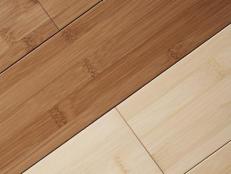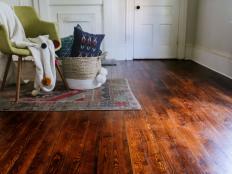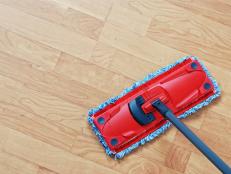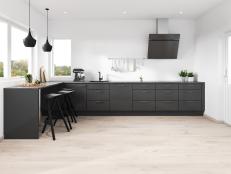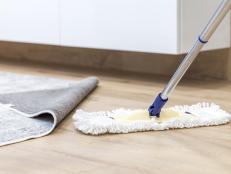Wood Flooring Finishes Make a Difference
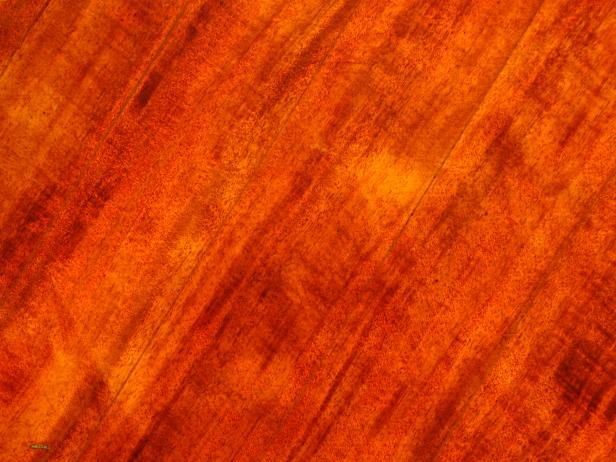
Hemera Technologies
The type of finish on a wood floor makes a difference on looks, durability and wear. From traditional oak hardwood floors to exotics such as Brazilian walnut (also called ipe) and Bolivian rosewood, selecting a floor finish to best suit the type of wood is critical to protect it, says Deb Neely, service representative with Lon Musolf Distributing, a Vadnais Heights, Minn.-based floor distributor that works closely with architects and builders.
Increasingly, many varieties of hardwood flooring come from the manufacturer already finished, Neely says. That typically eliminates the need for any sealer or finish after installation. "Manufacturers provide information on the prefinish and will give recommendations for any additional finishing."
Most exotic-wood floors are manufactured as solid floors, while some varieties are available as an engineered floor. "Cork, for instance, is a very resilient wood," Neely explains. "We're now seeing most manufacturers sell these and other exotics prefinished with an aluminum oxide finish or UV-cured acrylic finish. However, natural cork, still a popular alternative, can be sanded and finished."
Neely adds that bamboo comes in a natural, yellow color or medium-brown tone, with grain patterns that run either horizontally or vertically. It's unusual to see it stained a dark color. "Bamboo takes to sanding and finishing but not to stain because of its hardness rating, which is similar to maple — harder than oak," she says.
Finishing Up
Most unfinished hardwood floors require one coat of sealer and at least two coats of protectant finishing. Sealing is very important, especially under polyurethane finishes, because it seals the wood and helps to prevent panelization; the separation of groups of boards from others or from the rest of the floor.
"Stain can substitute as the initial seal coat, depending on the look you want to achieve, but we always recommend checking with the manufacturer's instructions," Neely says. "We don't recommend staining most exotics, even maple, because of their cell structures and hardness."
Oil and Water
Beyond the application of stain and/or sealer, it's essential to apply a water- or oil-based finish to protect the wood. The choice depends on the type of wood, desired results, color and grain pattern. Neely notes these distinctions in polyurethane finishes (as well as the fact that floor installers usually have strong preferences about one kind or the other):
Water-Based
- These fast drying, water-based finishes need to be applied with focus to avoid brush or lap marks.
- They let the natural color of the wood come through.
- Many flooring professionals consider water-based finishes to be superior to oil-based finishes.
- They are often recommended for many types of exotic woods.
- Because they are water-based, they are considered environmentally responsible.
Oil-Based
- Oil-based polyurethane finishes add more color and depth to most woods: an ambering, yellow effect over light woods while darkening the hue of stained and dark woods.
- They are more forgiving than water-based when application is uneven.
- The drying time is 12 to 24 hours, so plan accordingly.
- Oil-based finishes enhance the wood of species such as walnut and red birch. (Water-based finishes can wash out rich, dark woods.)
- Hand-rubbed finishes occasionally are used on special wood. Tung oil is an alternative for rustic or reclaimed-wood floors to get a natural look.
- Neely adds that satin finishes are an overwhelmingly popular choice. "A low sheen offers a natural look that shows less wear. High gloss will show wear easily."
- Beyond the manufacturer's recommendations, Neely recommends that contractors who are unsure about the type of finish or care instructions contact a flooring expert.






